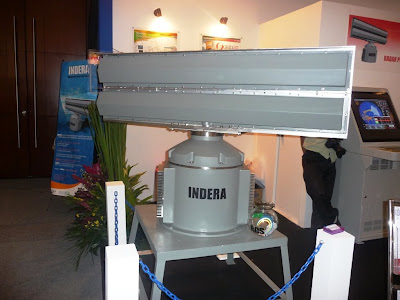
16 Pesawat Tempur Brasil Lengkapi Alutsista TNI 2012
MALANG - Sebanyak 16 pesawat tempur jenis Super Tucano EMB - 314 buatan Brasil pada tahun 2012 akan melengkapi alutsista (alat utama sistem persenjataan) Indonesia khususnya TNI Angkatan Udara (AU).
Hal itu dikatakan Kepala Staf Angkatan Udara (KSAU) Marsekal Imam Syufaat, saat kunjungan kerja ke Pangkalan TNI AU Abdurachman Saleh, Kabupaten Malang, Jawa Timur, Jumat.Kepastian datangnya pesawat itu pada 2012, setelah pihak Markas Besar TNI AU melakukan tanda tangan Letter of Credit untuk pembelian total 16 pesawat jenis itu. "Dalam tanda tangan Letter of Credit itu, sudah termasuk masa pelatihan bagi mekanik dan penerbang kita," katanya.
Ia menjelaskan, kedatangan pesawat Super Tucano akan dilakukan secara bertahap dan dimulai awal tahun 2012.
"Nilai kontrak pembeliannya sekitar US$ 260 juta dan saat ini tugas kita adalah mempersiapkan sarana dan prasarana, termasuk fasilitas bangunan seperti shelter, hanggar dan ruangan kantor," katanya.
Pesawat itu memiliki kemampuan yang paling unggul dibandingkan dengan jenis pesawat tempur lainnya. "Amerika saja juga memilih Super Tucano untuk memperkuat kekuatan udaranya, namun saat ini masih terkendala kebijakan politik negara tersebut," katanya.
Pesawat itu dipesan akibat pesawat jenis OV-10F Bronco yang dimiliki Indonesia dinyatakan grounded (masuk karantina).
"Rencananya, pesawat Super Tucano akan digunakan misi operasi taktis dalam membantu pasukan di darat, sebab pesawat ini memiliki keunggulan close air support udara ke darat dari jarak dekat," katanya.
Super Tucano juga memiliki mesin tunggal buatan Empresa Braziliera de Aeronautica, Brazil, dan memiliki kemampuan menembakkan asap ke darat secara cepat untuk menunjukkan posisi musuh. (gor/ant)
(Investor Daily)






















 J-15 shipborne heavy fighter (photo : Defense Update)
J-15 shipborne heavy fighter (photo : Defense Update)







 Peluncuran rudal Yakhont dari fregat KRI Oswald Siahaan (photo : Vivanews)
Peluncuran rudal Yakhont dari fregat KRI Oswald Siahaan (photo : Vivanews) Lintasan rudal Yakhont buatan Rusia (photo : ARC)
Lintasan rudal Yakhont buatan Rusia (photo : ARC)

 Type 206A submarine from Germany (photo : Militaryphotos)
Type 206A submarine from Germany (photo : Militaryphotos)











